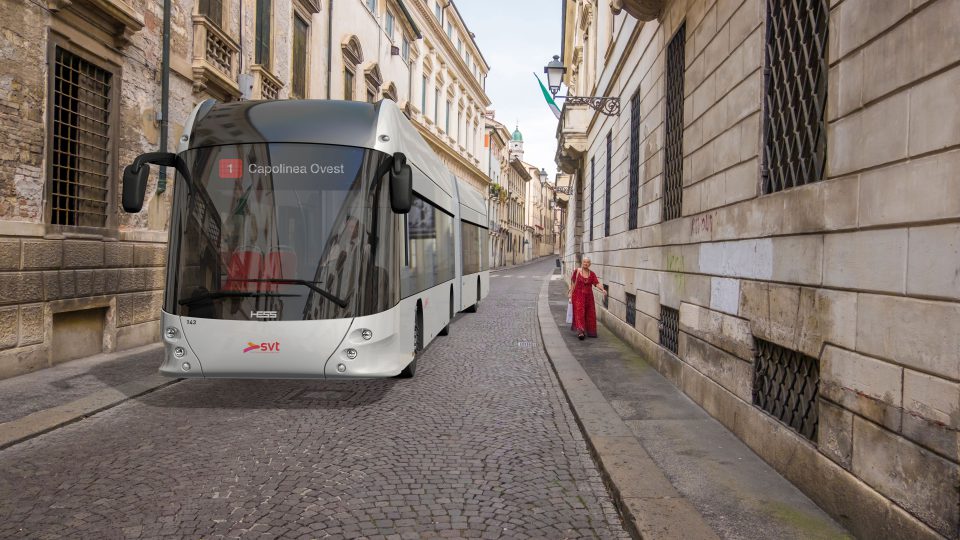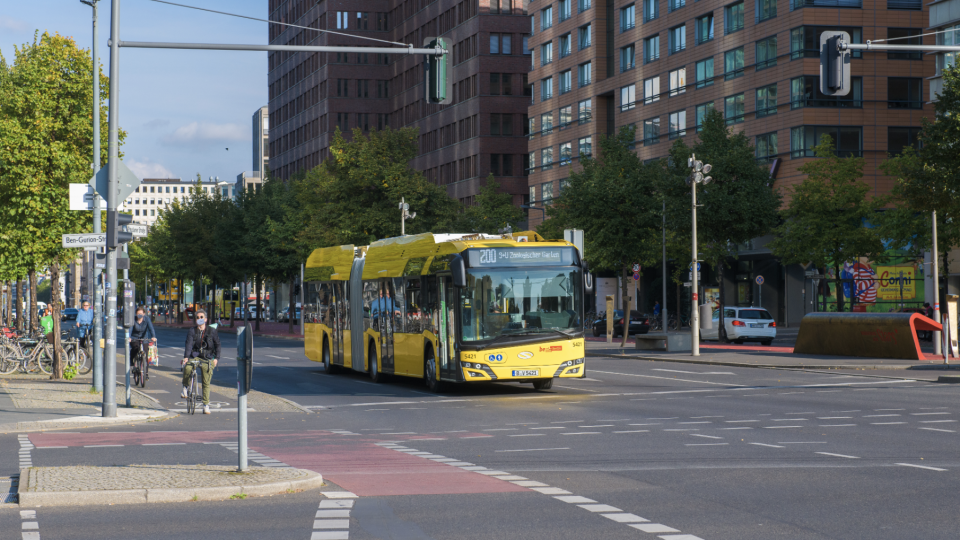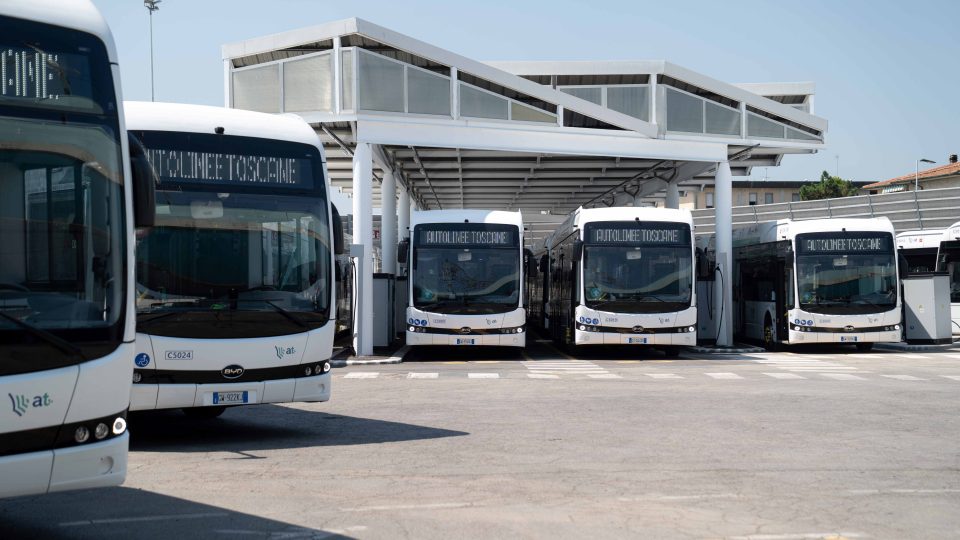Vicenza chooses Hess LightTram: first deliveries in 2027
Vicenza has made its choice: Hess. It will be the Swiss manufacturer to will supply SVT Vicenza 16 electric buses, which will be purchased thanks to a 19 million e contribution granted by the Ministry of Infrastructure and Transport. Deliveries will begin in October 2027 and presumably be completed by December 2027. The buses will […]
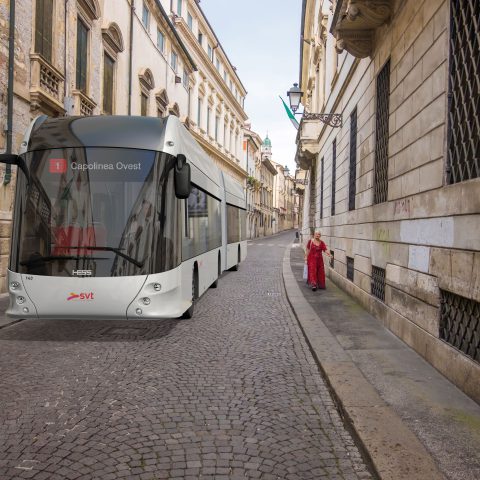
Vicenza has made its choice: Hess. It will be the Swiss manufacturer to will supply SVT Vicenza 16 electric buses, which will be purchased thanks to a 19 million e contribution granted by the Ministry of Infrastructure and Transport.
Deliveries will begin in October 2027 and presumably be completed by December 2027. The buses will be used on the future “Red LAM” line.
Potrebbe interessarti
Italy: after Genoa, Hess selected to provide flash-charged e-buses also in Vicenza (with Hitachi)
The Lightram 19 for Vicenza
The vehicles will be of the Lightram 19 type with Hitachi’s fast charging (flash charge) technology, capable of providing 600 kW of power for 20 seconds. At 18 meters long and approved to carry up to 150 people (with 34 seats and 2 handicapped seats), they are equipped with the latest technological systems that ensure high travel comfort, including intelligent thermal management, which will ensure inside the passenger compartment automatic temperature adjustment according to the season.
TOSA technology
The technology adopted traces the TOSA model in operation in Geneva. The acronym TOSA comes from the initials of the four partners involved for the pilot project: TPG, the public transport operator in Geneva; Opi, the Office for the Promotion of Industries and Technologies in the Geneva-Geneva Area; Sig (Geneva Industrial Services); and Abb.
The principle is the speeding up of the recharging phase, which is more limited to the terminals with long waiting times but can be done in a few seconds both at the terminals and along the route. Recharging along the line obviously cannot force the vehicle to a prolonged stop, with imaginable consequences on the regularity of operation, which could result in longer waiting time at stops or the insertion of an additional machine shift. Crucial, therefore, is the speed of reloading, both on the line and at stops at the terminus.
The recharging technique (flash or biberonnage) involves equipping each vehicle with an automatic arm, which connects in less than a second to the pole (similar to a skid) at each charging station. Charging time averages about 15 to 20 seconds, which is usually acceptable time for the operating schedule. It is not always necessary to use all of the charging stations: the driver checks on screen the state of charge of the batteries, which may have stored additional energy in the deceleration and braking phases: as a result of the assessment, the driver may not use the charging station, and perhaps even the next ones, managing to reach the end of the line; alternatively, depending on the state of charge, one or more charging stations may need to be used. The state of batteries may vary depending on factors such as the load on board, the elevation profile, and the use of accessories such as air conditioning.
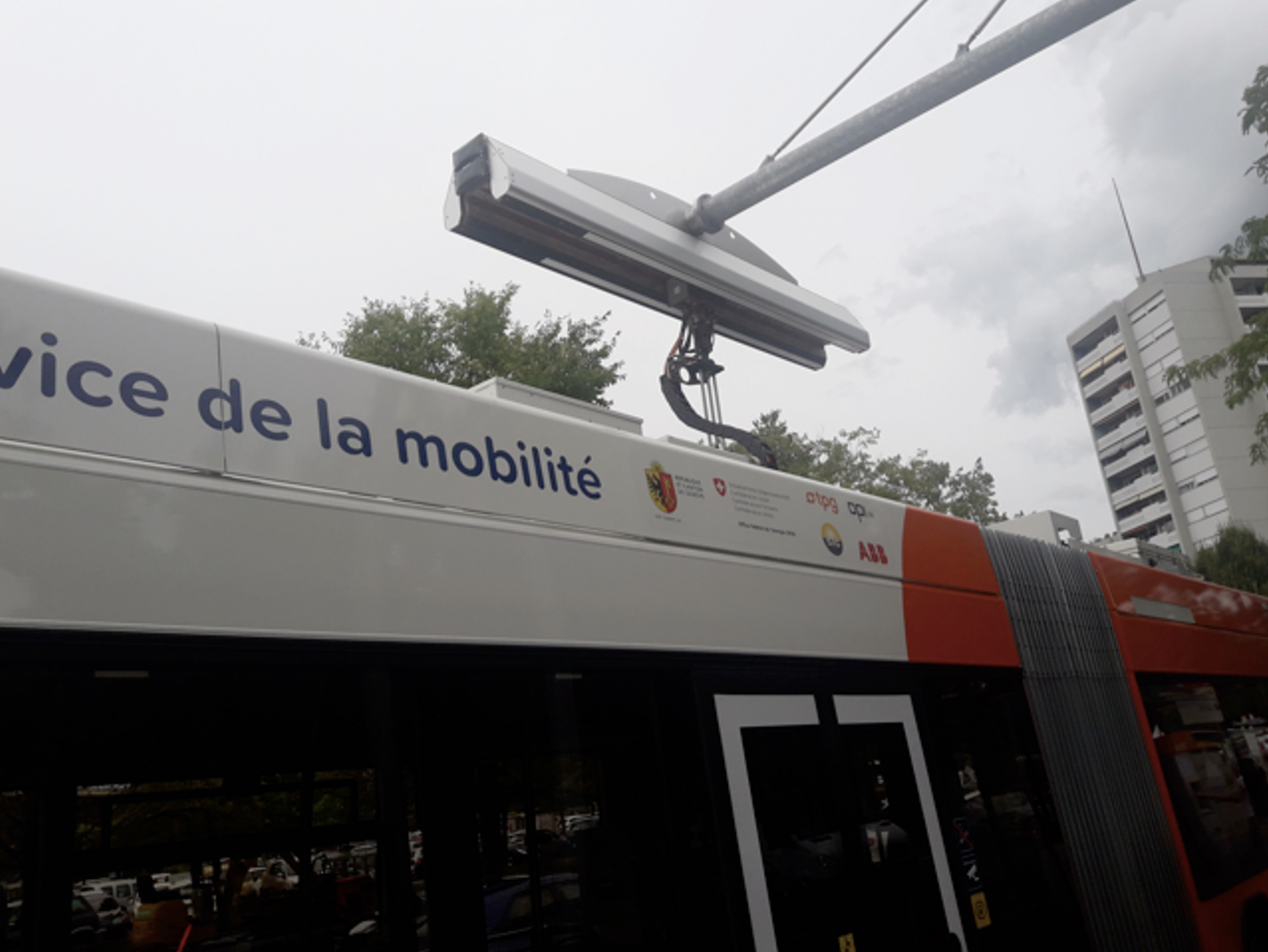
Hitachi Energy’s role
Hitachi Energy has refined and optimized its flash charging technology, called Grid-emotion. According to Hitachi, with the help of appropriate technologies and ensuring optimal energy management, the system can save up to 1,000 tons of CO2 on a bus line whose overall projected mileage is 600,000 kilometers per year. In addition, the energy costs of the e-bus are claimed to be 30 percent lower than those of a diesel bus.
Electric buses will be equipped with supercapacitors: among the features of these energy conversion and storage devices, important are high specific power, almost instantaneous charging and discharging capability, and higher residual life, being able to easily the 10 thousand charge and discharge cycles.
The 66-kWh LTO lithium-ion batteries will be placed on the roof of the LightTrams while recharging will take place directly during stops at stops and terminuses, through a special infrastructure that will be built at stops selected by RFI as part of the work on the High-Speed rail line.
It is estimated that each electric bus will be able to travel about 55,000 km per year, saving 1,000 tons of CO2 emissions every 12 months, compared to regular Euro 6 thermal buses. Against this mileage, the savings in terms of CO2 emitted compared to even a state-of-the-art Euro 6 bus will be about 62,500 tons per year for each vehicle, for a total of 1,000 tons less CO2 released into the atmosphere each year.
Thanks to the use of Pnrr funds SVT was also able to acquire 10 electric buses with overnight charging system that will be delivered at the end of 2024 and deployed on Vicenza’s urban network.
by Stefano Alfano

